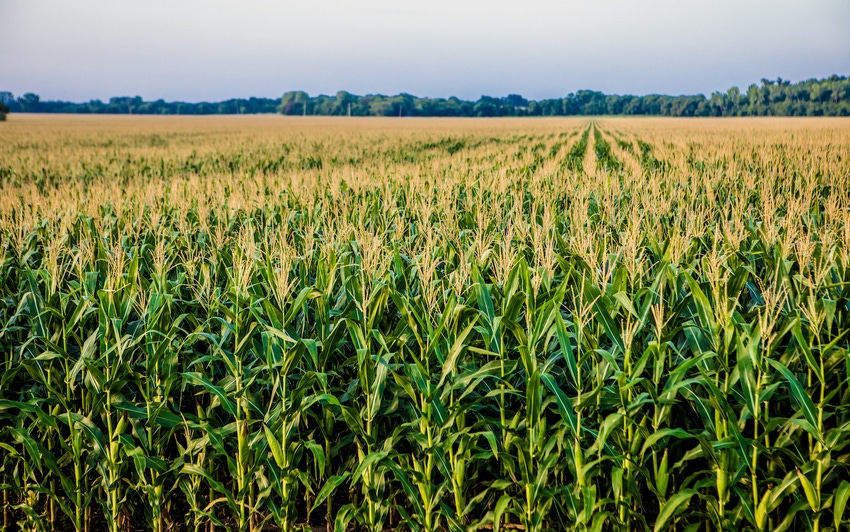
Traditionally the August USDA report is not a tremendous market mover. Historically, the only bit of “fresh news” that trade is anxious to see on the August USDA WASDE report is an update to U.S. production estimates.
The August report is often when the USDA will first provide a yield estimate update. This year, an update to yield is not the only bit of information that trade will be anxious to see, as an update to planted acres could also be revealed.
Late planting impact
It is not normal for USDA to adjust planted acres in its August report. Why the change?
In the June 30, 2022 USDA report, the National Agricultural Statistics Service (NASS) announced a “special note” that its planted acreage estimates were “based on data provided by respondents who were contacted between May 28 and June 16. Nationally, corn left to be planted was 4.03 million acres. Soybeans left to be planted for the United States was 15.8 million acres.”
They went on to say that “In July, NASS will collect updated information on 2022 acres planted to barley, canola, corn, dry edible beans, oats, sorghum, soybeans, sunflowers, and Durum & other spring wheat in three States. Excessive rainfall had delayed planting at the time of the survey, leaving a portion of acres still to be planted in Minnesota, North Dakota and South Dakota…If the newly collected data justify any changes, NASS will publish updated acreage estimates in the Crop Production report to be released at noon ET on Friday, August 12.”
Trade will be curious to know if planted acres will increase, decrease, or remain the same. Currently all wheat planted acres are pegged at 47.1 million acres. Planted corn acres are estimated to be at 89.9 million acres, with soybean planted acres at 88.3 million acres.
Global production monitored
Looking abroad, trade also anticipates that corn production in the European Union might be lowered due to heat across the region, while the Brazil corn production might be increased, due to a large 2nd crop corn known as Safrinha. And who knows how the USDA will account for Ukraine grain production.
Demand questions
The demand categories for grain may be in question. While some would cite the need to increase exports of U.S. grain due to lower Ukraine production, others say that because China has locked down various cities within the country for Covid off and on for the past few months, that demand for some grains might be marginally lower due to less use within China. Or, will China potentially purchase less U.S. grain in retaliation to Mrs. Pelosi’s recent visit to Taiwan?
In addition, with Brazil growing a large second corn crop, they may have more to offer to export than initially thought. That crop could compete with U.S. export demand.
Thinking of the livestock sector, with more cattle coming to market recently due to poor pasture conditions and higher feed values, will the upcoming WASDE report show a reduction in grain needed for feed for the latter part of 2022 and into 2023?
One bright note for corn and soybean demand is the recent spending deal reached last week between Senate Majority Leader Chuck Schumer and Senator Joe Manchin, which would extend a $1/gallon tax credit for biodiesel and renewable diesel through 2024, according to the bill's text. Demand for renewable fuels looks to be strong.
Is the bull market over?
With the mix of outside market news clashing with the uncertainty of grain fundamentals, the month of August could prove to extend volatile trade for grains. Will grain market fundamentals remain strong enough to keep grain prices in a long term upward trend that prices have enjoyed for nearly two years? The information released on the August 12 USDA report will likely set the tone for grain prices through harvest. A large injection of bullish news is needed to keep grain prices higher. Otherwise, as I wrote about recently, this may be one of those times when commodity prices bow to the pressure of outside market influence rather than react to the true supply and demand fundamentals of the commodity itself.
Reach Naomi Blohm: 800-334-9779 Twitter: @naomiblohm and [email protected]
Disclaimer: The data contained herein is believed to be drawn from reliable sources but cannot be guaranteed. Individuals acting on this information are responsible for their own actions. Commodity trading may not be suitable for all recipients of this report. Futures and options trading involve significant risk of loss and may not be suitable for everyone. Therefore, carefully consider whether such trading is suitable for you in light of your financial condition. Examples of seasonal price moves or extreme market conditions are not meant to imply that such moves or conditions are common occurrences or likely to occur. Futures prices have already factored in the seasonal aspects of supply and demand. No representation is being made that scenario planning, strategy or discipline will guarantee success or profits. Any decisions you may make to buy, sell or hold a futures or options position on such research are entirely your own and not in any way deemed to be endorsed by or attributed to Total Farm Marketing. Total Farm Marketing and TFM refer to Stewart-Peterson Group Inc., Stewart-Peterson Inc., and SP Risk Services LLC. Stewart-Peterson Group Inc. is registered with the Commodity Futures Trading Commission (CFTC) as an introducing broker and is a member of National Futures Association. SP Risk Services, LLC is an insurance agency and an equal opportunity provider. Stewart-Peterson Inc. is a publishing company. A customer may have relationships with all three companies. SP Risk Services LLC and Stewart-Peterson Inc. are wholly owned by Stewart-Peterson Group Inc. unless otherwise noted, services referenced are services of Stewart-Peterson Group Inc. Presented for solicitation
About the Author(s)
You May Also Like






